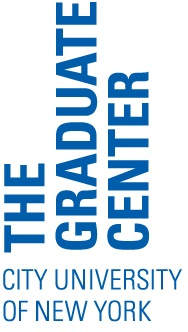The Benefits and Challenges of Adjuncting

Adjuncting has become increasingly foundational to academia in the United States. As the availability of tenure-track positions decline, universities have become more reliant on part-time professors to teach students. The rise of adjuncting has its roots in the expansion of higher education following the passage of the G.I. Bill and the cuts in spending in the aftermath of the economic crisis of the 1970s. This transformation provides doctoral candidates and recent graduates an opportunity to gain experience as well as earn a paycheck while building towards the next step in their careers, but there are also many challenges that have led adjuncts to organize to improve their conditions.
Resources for Adjuncts
There are a number of ways you can apply for an adjunct position. If you’re looking to teach within the CUNY system you can go to cuny.jobs. You can also reach out to chairs of departments. Send them your C.V. and a cover letter explaining why you’d be a good fit. Let them know what courses you would be capable of teaching. Pay attention to updates from your Assistant Program Officer. They may have been made aware of additional opportunities. Open adjunct positions are also made available on websites like Indeed.com.
The Teaching and Learning Center has great resources for educators. You can schedule a meeting with a staff member who can inform you on the best practices to land an adjuncting position. There are workshops that will offer useful techniques in dealing with the challenges of teaching students. Their website also has a handbook that contains advice on pedagogical approaches.
The Professional Staff Congress, the union that represents 30,000 faculty and staff at the City University of New York, advocates for adjuncts through the Committee of Adjuncts and Part-timers. If you’re interested in learning how much you’d make as an adjunct in the CUNY system check out their guide. Adjuncts are also eligible for health-insurance after working two consecutive semesters. Here’s where you can learn how to sign up.
Adjuncts Fighting Back
While providing a means for institutions of higher education to cut labor costs, adjuncting poses a number of challenges for academics. Even though adjuncting is a valuable way for aspiring professors to gain experience, its temporary employment is insecure. Low wages make it difficult to support a decent standard of living. Juggling multiple teaching jobs prevents part-time professors from engaging in the research and writing necessary to secure full-time employment at a university.
Academics have been organizing and fighting back to improve their material conditions. Across the country there has been a surge in unionization and strike activity in the higher education sector. Last year 48,000 academic workers in the University of California system withheld their labor for over a month. They demanded and won increased pay as well as better benefits.
Adjuncts have played a central role in academic labor struggles. Here in New York City, part-time faculty at the New School went on strike at the end of last fall. After three weeks on the picket lines, union leadership negotiated a new contract with significant wage increases. Pay rates rose by 13 percent in the first year for the best-paid adjuncts. By the fifth year, the adjunct would receive a 36 percent raise amounting to $7,820 per course. Earlier last year New York University adjuncts threatened to go on strike and won even more sizable wage increases. An adjunct who made $6,268 per class last year will make $10,489 six years from now. Nearby in New Jersey, Rutgers academic workers recently won material gains in a major strike. The new contract will increase base pay to $8,330 by the fourth and final year of the deal for three credit courses. Collective action has proved to be a successful mechanism for improving the lives of academic workers.
PSC-CUNY
The question remains for what will happen for the thousands of adjuncts and other faculty who teach at CUNY campuses across the five boroughs. In alliance with student organizations and other activists in New York City, union members have been pushing for a New Deal for CUNY. The legislation would raise salaries for adjunct professors and lecturers, abolish in-state tuition for students, require minimum professor to student ratios for classrooms, increase the number of mental health counselors and fund repairs to fix the broken, aging infrastructure. Legislative lobbying continued after the contract between PSC and the university expired at the end of February. Union leadership argues that “the next contract must fairly compensate and support CUNY’s workforce, expand full-time hiring and combat contingency, ensure academic integrity across modalities, and foster a safe and sustainable learning environment.”
Educational labor is the backbone of CUNY. Increasing adjunct pay would make life more sustainable for graduate students who need extra financial support as they work to complete their doctoral degrees as well as those who rely on it as their primary source of income while searching for a tenure-track position.




